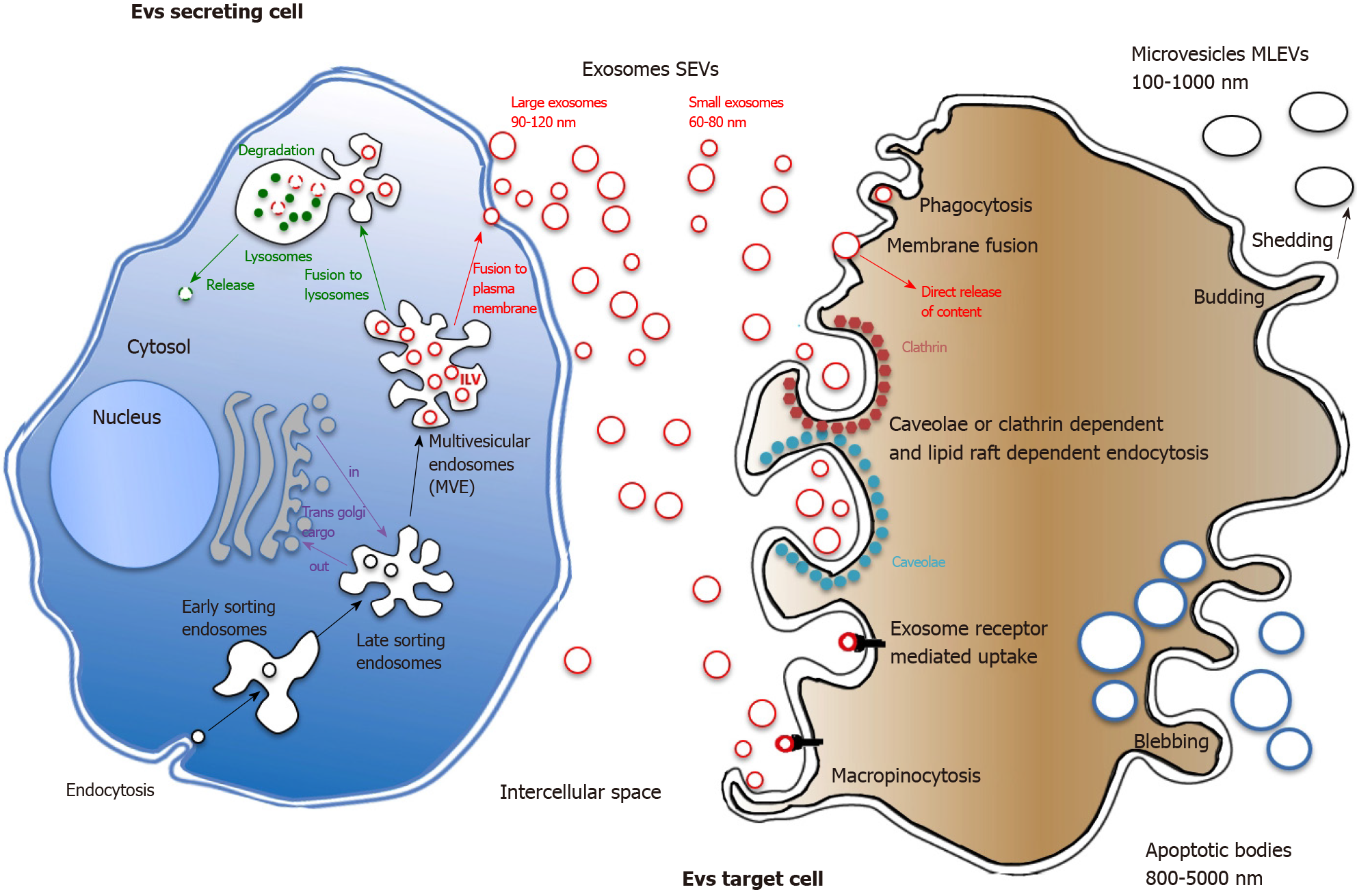Copyright
©The Author(s) 2021.
World J Gastrointest Oncol. Nov 15, 2021; 13(11): 1561-1598
Published online Nov 15, 2021. doi: 10.4251/wjgo.v13.i11.1561
Published online Nov 15, 2021. doi: 10.4251/wjgo.v13.i11.1561
Figure 1 Extracellular vesicles biogenesis and interaction with recipient cells.
Extracellular vesicles (EVs) may have multiple origins. They can originate from plasma membrane blebbing during the apoptotic process giving rise to large apoptotic bodies or by membrane budding that leads to heterogeneous membranous EVs shedding. Small EVs (SEVs, exosomes) originate from internal budding of plasma membrane giving rise to early endosomes. By complex maturating interactions with the Golgi apparatus, early become late endosomes. The membranes of late endosomes form intraluminal vesicles (ILVs), small cargos containing proteins from plasma membrane and Golgi as well as nucleic acids. ILVs are contained in multivesicular endosomes that will fuse with either plasma membrane, releasing SEVs in the extracellular space or with lysosomes for further internal degradation. The endosomal sorting complex required for transport is the key machinery of protein sorting into SEVs. Once recognized, strongly depending on recipient cell type, EVs will enter through a variety of endocytic routes, either through clathrin-dependent or independent pathways (caveolin-mediated uptake, lipid raft-mediated internalization, etc.). Phagocytosis, macropinocytosis and simple membrane fusion can also be involved in EVs uptake. MLEVs: Medium large extracellular vesicles; SEVs: Small extracellular vesicles; MVEs: Multivesicular endosomes; ILVs: Intraluminal vesicles; MVP: Multivesicular particles; ESCRT: Endosomal sorting complex required for transport.
- Citation: Mammes A, Pasquier J, Mammes O, Conti M, Douard R, Loric S. Extracellular vesicles: General features and usefulness in diagnosis and therapeutic management of colorectal cancer. World J Gastrointest Oncol 2021; 13(11): 1561-1598
- URL: https://www.wjgnet.com/1948-5204/full/v13/i11/1561.htm
- DOI: https://dx.doi.org/10.4251/wjgo.v13.i11.1561









